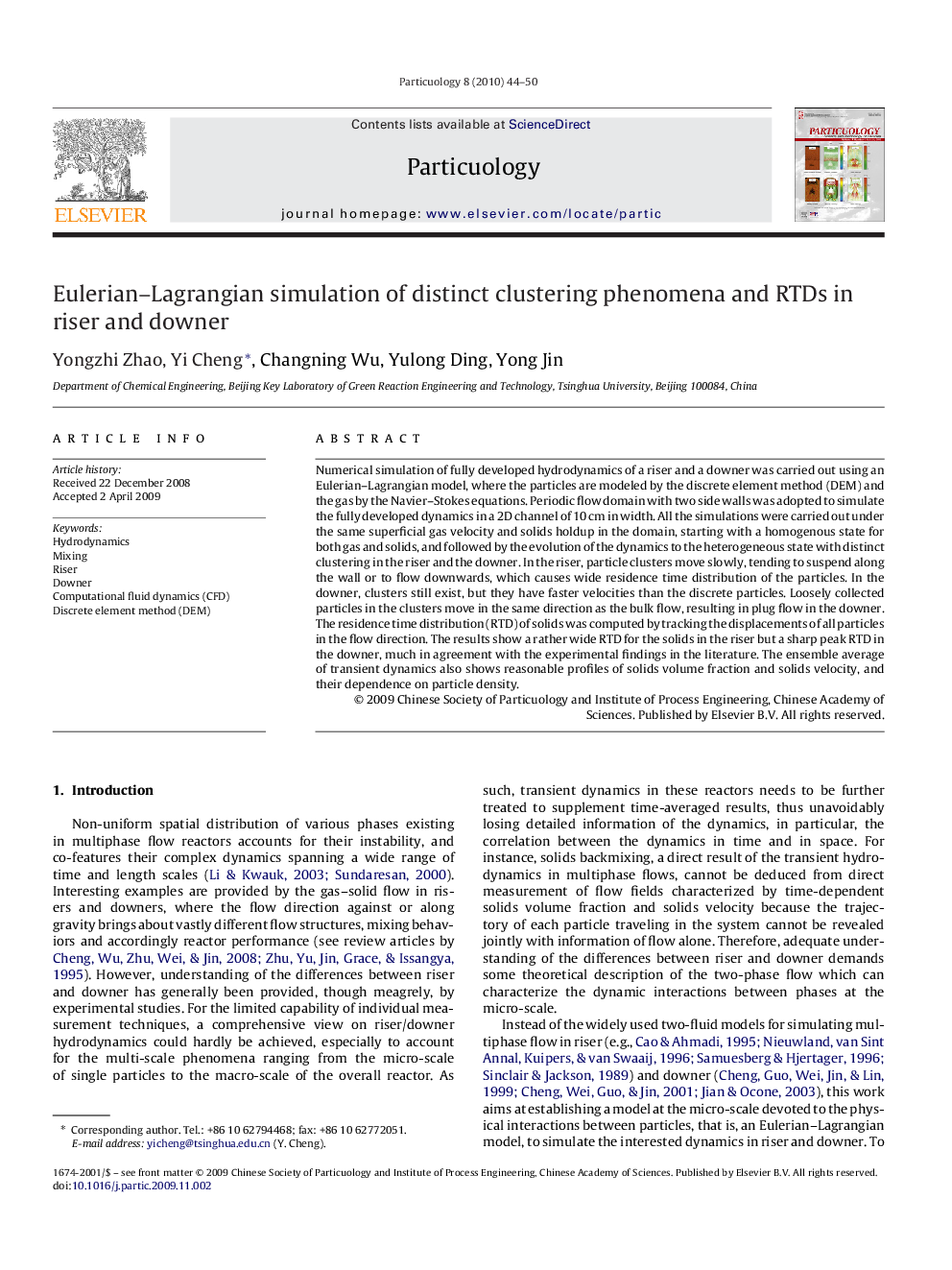| Article ID | Journal | Published Year | Pages | File Type |
|---|---|---|---|---|
| 672598 | Particuology | 2010 | 7 Pages |
Numerical simulation of fully developed hydrodynamics of a riser and a downer was carried out using an Eulerian–Lagrangian model, where the particles are modeled by the discrete element method (DEM) and the gas by the Navier–Stokes equations. Periodic flow domain with two side walls was adopted to simulate the fully developed dynamics in a 2D channel of 10 cm in width. All the simulations were carried out under the same superficial gas velocity and solids holdup in the domain, starting with a homogenous state for both gas and solids, and followed by the evolution of the dynamics to the heterogeneous state with distinct clustering in the riser and the downer. In the riser, particle clusters move slowly, tending to suspend along the wall or to flow downwards, which causes wide residence time distribution of the particles. In the downer, clusters still exist, but they have faster velocities than the discrete particles. Loosely collected particles in the clusters move in the same direction as the bulk flow, resulting in plug flow in the downer. The residence time distribution (RTD) of solids was computed by tracking the displacements of all particles in the flow direction. The results show a rather wide RTD for the solids in the riser but a sharp peak RTD in the downer, much in agreement with the experimental findings in the literature. The ensemble average of transient dynamics also shows reasonable profiles of solids volume fraction and solids velocity, and their dependence on particle density.
